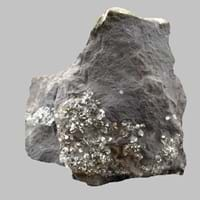Definition
Argillites are highly compact sedimentary or slightly metamorphosed rocks that consist largely or wholly of particles of clay or silt but lack the fissility of shale or the cleavage characteristic of slate
Dacite is a volcanic igneous rock which is rintermediate in composition between andesite and rhyolite
Origin
Unknown
Romania and Moldova, Europe
Discoverer
Unknown
Unknown
Etymology
From Latin Argilla (clay) and -ite in English which became agrilla+ -ite = Argillite
From Dacia, a province of the Roman Empire which lay between the Danube River and Carpathian Mountains where the rock was first described
Class
Sedimentary Rocks
Igneous Rocks
Sub-Class
Durable Rock, Soft Rock
Durable Rock, Soft Rock
Group
Not Applicable
Volcanic
Other Categories
Fine Grained Rock, Opaque Rock
Fine Grained Rock, Medium Grained Rock, Opaque Rock
Texture
Clastic, Polished
Aphanitic to Porphyritic
Color
Dark Grey to Black, Pink, Red, White
Bluish - Grey, Brown, Grey, Light to Dark Grey
Durability
Durable
Durable
Appearance
Rough and Dull
Vesicular
Interior Uses
Decorative Aggregates, Homes, Interior Decoration
Decorative Aggregates, Entryways, Interior Decoration
Exterior Uses
As Building Stone, Garden Decoration, Office Buildings
As Building Stone, Paving Stone, Garden Decoration
Other Architectural Uses
Curbing, Whetstones
Curbing
Construction Industry
Used for flooring, stair treads, borders and window sills.
As Dimension Stone, Construction Aggregate, for Road Aggregate, Landscaping
Medical Industry
Not Yet Used
Not Yet Used
Antiquity Uses
Artifacts, Monuments, Sculpture
Artifacts
Commercial Uses
Fire resistant, Used to manufracture paperweights and bookends
Commemorative Tablets, Creating Artwork
Types
Not Available
Footwall Dacite, Hanging wall Dacite, Tuff and Biotite Dacite
Features
Is one of the oldest rock
Host Rock for Lead, Is one of the oldest rock
Archaeological Significance
Monuments
Used
Not Yet Used
Famous Monuments
Data Not Available
Not Applicable
Sculpture
Used
Not Yet Used
Famous Sculptures
Data Not Available
Not Applicable
Figurines
Used
Not Yet Used
Formation
An argillite is a fine-grained sedimentary rock mainly composed of clay particles which forms from lithified muds which contain variable amounts of silt-sized particles.
Dacitic magma is formed by the subduction of young oceanic crust under a thick felsic continental plate. Further, the Oceanic crust is hydrothermally altered as quartz and sodium are added.
Mineral Content
Biotite, Chlorite, Feldspar, Micas, Muscovite or Illite, Plagioclase, Pyrite, Quartz
Amphibole, Apatite, Biotite, Feldspar, Garnet, Hornblade, Magnetite, Plagioclase, Pyroxene, Quartz, Zircon
Compound Content
Iron(III) Oxide, Potassium Oxide, MgO, Silicon Dioxide
Ca, Fe, Potassium Oxide, Mg, Potassium, Silicon Dioxide
Types of Metamorphism
Not Applicable
Burial Metamorphism, Cataclastic Metamorphism
Types of Weathering
Biological Weathering
Biological Weathering, Chemical Weathering, Mechanical Weathering
Types of Erosion
Chemical Erosion
Chemical Erosion
Grain Size
Fine Grained
Medium to Fine Coarse Grained
Fracture
Conchoidal to Uneven
Conchoidal
Streak
White to Grey
White
Porosity
Highly Porous
Less Porous
Luster
Waxy and Dull
Subvitreous to Dull
Toughness
2.6
Not Available
Specific Gravity
2.56-2.68
2.86-2.87
Transparency
Opaque
Translucent
Density
2.54-2.66 g/cm3
2.77-2.771 g/cm3
Resistance
Heat Resistant, Impact Resistant
Heat Resistant, Impact Resistant, Pressure Resistant, Wear Resistant
Deposits in Eastern Continents
Asia
Bangladesh, China, India, Russia
Not Yet Found
Africa
Ethiopia, Kenya, Morocco, South Africa, Tanzania
Not Yet Found
Europe
Austria, France, Germany, Greece, Italy, Romania, Scotland, Spain, Switzerland
France, Greece, Romania, Scotland, Spain
Others
Not Yet Found
Not Yet Found
Deposits in Western Continents
South America
Bolivia, Chile, Colombia, Ecuador, Peru, Venezuela
Argentina, Bolivia, Chile, Colombia, Ecuador, Peru, Venezuela
Deposits in Oceania Continent
Australia
New South Wales, New Zealand, Queensland, Victoria, Western Australia
New Zealand, South Australia, Western Australia










